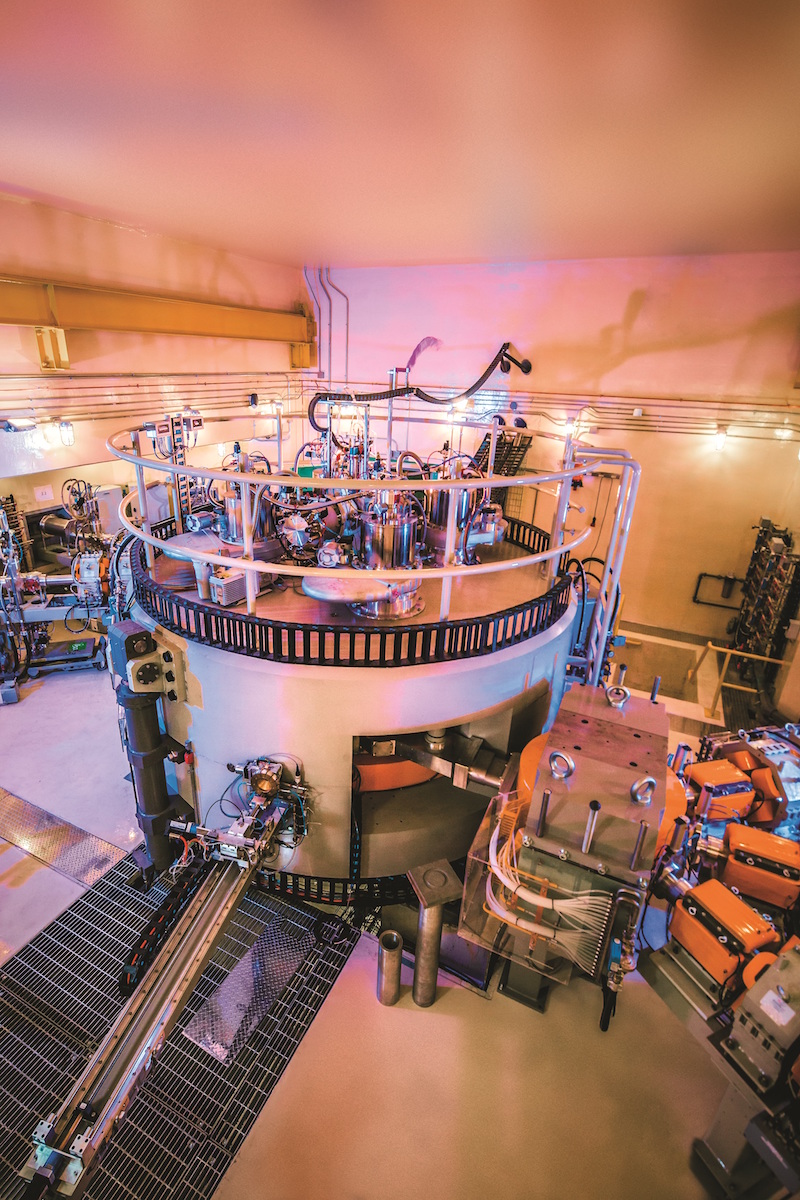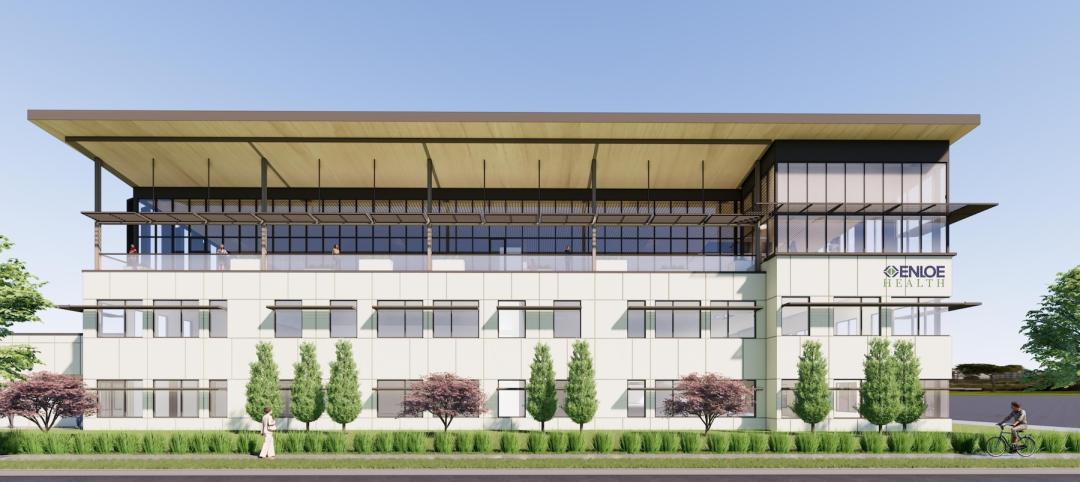Zevacor Molecular, a healthcare firm that manufactures PET and SPECT radiopharmaceutical products, installed the first and largest commercial 70-million electron volt (MeV) cyclotron dedicated to producing medical isotopes for the global market. Based in Noblesville, IN, Zevacor’s primary focus is to manufacture Strontium 82 and Germanium 68, although it is capable of producing a wide variety of other radioisotopes (atoms with excess energy) for both research and clinical applications.
“Each of these drug products have a certain affinity within the body and will preferentially go to the targeted disease,” said Todd Hockemeyer, Vice President of Quality and Regulatory Affairs at Zevacor. “It’s kind of like a car and driver. The driver is the radioactive isotope connected to a chemical, the car, which will go to a certain place in the body. Often a PET scan is combined with a CT scan to match it up with your anatomical body to see which organs the radioactivity, and therefore the disease, might be located in.”
The 70 MeV, 140-ton cyclotron was manufactured by Ion Beam Applications (IBA) in Belgium. The cyclotron is housed in an 11,000-cubic-yard concrete vault with 300 tons of reinforcing steel rod. It required more than 1,300 trucks of concrete to complete the project. On one Saturday, over 300 trucks made one continuous pour to create the foundation, as this “raft” cannot shift and have a deflection of more than 1 mm without degrading the energy beam.
Manufacturing Strontium 82 requires a lot of energy. Most of the equipment involved in the process is powered pneumatically with compressed air, but Zevacor estimates its annual power bill at $1 million, with three-fourths of that energy spent cooling water to keep the cyclotron and targets from overheating.
 Viega ProPress was used on the HVAC lines
Viega ProPress was used on the HVAC lines
“The heat from highly purified water used to cool the targets and critical cyclotron components is transferred to another isolated chill system filled with purified water,” Hockemeyer said, “which is then cooled by a chill water system using water from the local utility.”
The cyclotron is housed with six other vaulted areas, each supplied with two separate sets of copper pipes—one for feed water to make the purified water supply and the other to extract the heat. Because purified water is extremely corrosive to copper, the copper pipe does not come in contact with that water. It only goes to the filtration system that purifies the water upon which it is transferred to the target through a PVC line.
“The integrity of that chilled water system is critical,” Hockemeyer said. “If the cooling system shuts down, so does our cyclotron.”
That’s why Zevacor chose Viega ProPress for copper over soldering.
“We understood how important it was to have highly purified water and a water containment system that’s reliable and doesn’t leak and doesn’t fail,” Hockemeyer said. “The cost of a failure is far in excess of any money we might shave off the installation process because we used welded fittings.”
Zevacor also chose Viega to reduce the danger of contamination and particles in the piping, which can become radioactive and create different problems with hazardous waste water.
Viega
800.976.9819
insidesales@viega.us
For the complete story, visit the Viega website here.
Related Stories
Healthcare Facilities | May 28, 2024
Healthcare design: How to improve the parking experience for patients and families
Parking is likely a patient’s—and their families—first and last touch with a healthcare facility. As such, the arrival and departure parking experience can have a profound impact on their experience with the healthcare facility, writes Beth Bryan, PE, PTOE, PTP, STP2, Principal, Project Manager, Walter P Moore.
MFPRO+ News | May 21, 2024
Baker Barrios Architects announces new leadership roles for multifamily, healthcare design
Baker Barrios Architects announced two new additions to its leadership: Chris Powers, RA, AIA, NCARB, EDAC, as Associate Principal and Director (Healthcare); and Mark Kluemper, AIA, NCARB, as Associate Principal and Technical Director (Multifamily).
Healthcare Facilities | May 21, 2024
A collaborative delivery contract adds a new wrinkle to construction management
The setup combines traditional pact structures with a different risk-sharing approach.
Healthcare Facilities | May 6, 2024
Hospital construction costs for 2024
Data from Gordian breaks down the average cost per square foot for a three-story hospital across 10 U.S. cities.
Sponsored | Healthcare Facilities | May 3, 2024
Advancing Healthcare: Medical Office Buildings at the Forefront of Access and Safety
This article explores the pivotal shift from traditional hospital settings to Medical Office Buildings (MOBs), focusing on how these facilities enhance patient access. Discover the key drivers of this transformation, including technological advancements, demographic trends, and a growing emphasis on integrated, patient-centered care. Learn how MOBs are not only adapting to modern healthcare demands but are also leveraging modern access control and safety innovations.
Architects | May 2, 2024
Emerging considerations in inclusive design
Design elements that consider a diverse population of users make lives better. When it comes to wayfinding, some factors will remain consistent—including accessibility and legibility.
Healthcare Facilities | Apr 16, 2024
Mexico’s ‘premier private academic health center’ under design
The design and construction contract for what is envisioned to be “the premier private academic health center in Mexico and Latin America” was recently awarded to The Beck Group. The TecSalud Health Sciences Campus will be located at Tec De Monterrey’s flagship healthcare facility, Zambrano Hellion Hospital, in Monterrey, Mexico.
Healthcare Facilities | Apr 11, 2024
The just cause in behavioral health design: Make it right
NAC Architecture shares strategies for approaching behavioral health design collaboratively and thoughtfully, rather than simply applying a set of blanket rules.
Healthcare Facilities | Apr 3, 2024
Foster + Partners, CannonDesign unveil design for Mayo Clinic campus expansion
A redesign of the Mayo Clinic’s downtown campus in Rochester, Minn., centers around two new clinical high-rise buildings. The two nine-story structures will reach a height of 221 feet, with the potential to expand to 420 feet.
Products and Materials | Mar 31, 2024
Top building products for March 2024
BD+C Editors break down March's top 15 building products, from multifamily-focused electronic locks to recyclable plastic panels.

















